As we come to the end of the year, I thought it would be fun
to share my top 10 books for 2017.
Like most writers, I love reading, and feel like I can never read as many books as I’d like to. But I’ve made room in my schedule in two ways:
- I read before bed: It helps relax my brain so I can sleep, and it’s one time I know I can always read, even if it’s only a half-page before I drift off!
- I read before I write: I started doing this after I attended a week-long writing workshop that involved nightly readings from well-known authors. I learned so much just listening to these writers that ever since then, I’ve read aloud from works by my heroes every morning before writing fiction. It not only gets me in the creative zone, it helps me add more books to the “read” over the course of a year.
Keep in mind: I’m no book reviewer, so you won’t find reviews here. Only a few comments on what I liked about each one, along with the book description.
In case you’re looking for some great books to read in 2018—and a few to help inspire and guide your writing progress—here they are: my top 5 fiction, top 4 non-fiction, and 1 indie spotlight. Happy reading!
Top 5 Fiction Books
In no particular order…
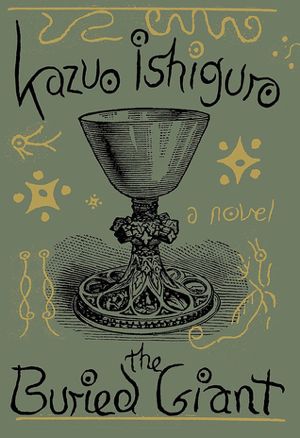 1. The Buried Giant, by Kazuo Ishiguro
1. The Buried Giant, by Kazuo Ishiguro
I like anything by Ishiguro, and really enjoyed The Unconsoled, but in the The Buried Giant, the author ventured into fantasy, which made it even more awesome for me. I also love allegory, and this book is a great one. It makes you think, but it’s very entertaining at the same time–I didn’t want to put it down.
Synopsis: In post-Arthurian Britain, the wars that once raged between the Saxons and the Britons have finally ceased. Axl and Beatrice, an elderly British couple, set off to visit their son, whom they haven’t seen in years. And, because a strange mist has caused mass amnesia throughout the land, they can scarcely remember anything about him. As they are joined on their journey by a Saxon warrior, his orphan charge, and an illustrious knight, Axl and Beatrice slowly begin to remember the dark and troubled past they all share. By turns savage, suspenseful, and intensely moving, The Buried Giant is a luminous meditation on the act of forgetting and the power of memory.
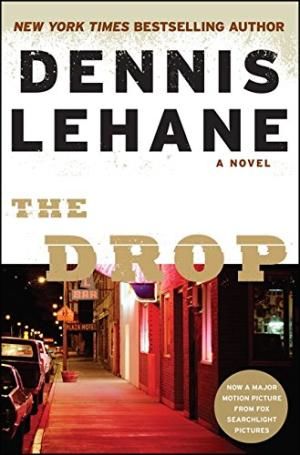 2. The Drop, by Dennis Lehane
2. The Drop, by Dennis Lehane
I’m a huge Dennis Lehane fan, especially after meeting him at a writing workshop back in 2013. The guy is a genius, and a master storyteller. My first favorite by him was The Given Day, and I’ve read several since. But then The Drop came out in theaters, starring Tom Hardy. It didn’t seem to do that well at the box office (I have no idea why!), as it left after a short time, but I adored the story. When I saw that it was based on a short story by Lehane, I kept my eye out, and soon found the hardcover. It’s a great mystery story wrapped up in a lot of heart.
Synopsis: Three days after Christmas, a lonely bartender looking for a reason to live rescues an abused puppy from a trash can and meets a damaged woman looking for something to believe in. As their relationship grows, they cross paths with the Chechen mafia; a man grown dangerous with age and thwarted hopes; two hapless stick-up artists; a very curious cop; and the original owner of the puppy, who wants his dog back. . . .
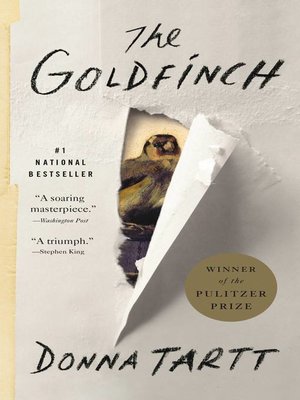 3. The Goldfinch, by Donna Tarte
3. The Goldfinch, by Donna Tarte
I’m late to the party on The Goldfinch, but only because my stack of books “to read” was too high to add any more until this year. I heard all the buzz about this book when it came out and kept eyeing in the store, but it wasn’t until my mom got me a Barnes & Noble gift card that I was able to indulge my desire to get this huge paperback. Don’t let the 700+ pages deter you. This book grabs you from the beginning and doesn’t let you go.
Synopsis: Theo Decker, a 13-year-old New Yorker, miraculously survives an accident that kills his mother. Abandoned by his father, Theo is taken in by the family of a wealthy friend. Bewildered by his strange new home on Park Avenue, disturbed by schoolmates who don’t know how to talk to him, and tormented above all by his longing for his mother, he clings to the one thing that reminds him of her: a small, mysteriously captivating painting that ultimately draws Theo into the underworld of art.
As an adult, Theo moves silkily between the drawing rooms of the rich and the dusty labyrinth of an antiques store where he works. He is alienated and in love—and at the center of a narrowing, ever more dangerous circle.
The Goldfinch is a mesmerizing, stay-up-all-night and tell-all-your-friends triumph, an old-fashioned story of loss and obsession, survival and self-invention, and the ruthless machinations of fate.
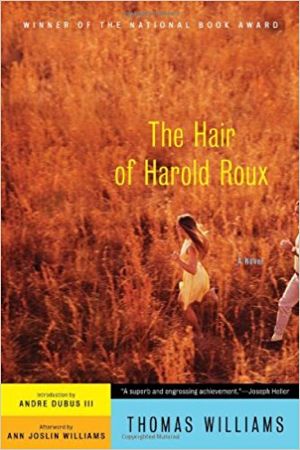 4. The Hair of Harold Roux, by Thomas Williams
4. The Hair of Harold Roux, by Thomas Williams
I learned of The Hair of Harold Roux when one of my other writing heroes, Andre Dubus III (House of Sand and Fog, Garden of Last Days) recommended it. (Dubus writes the intro to the book.) After one page I had to lift my jaw up off the ground. The writing is absolutely stunning, and sometimes laugh-out-loud funny.
This is also a great book for writers, as the main character is a college professor who is a writer, and he often comments on the writer’s life in ways that will have you nodding in agreement: yep, I get that.
Synopsis: In 1975 the National Book Award Fiction Prize was awarded to two writers: Robert Stone and Thomas Williams. Yet only Stone’s Dog Soldiers is still remembered today. That oversight is startling when considering the literary impact of The Hair of Harold Roux. A dazzlingly crafted novel-within-a-novel hailed as a masterpiece, it deserves a new generation of readers.
In The Hair of Harold Roux, we are introduced to Aaron Benham: college professor, writer, husband, and father. Aaron—when he can focus—is at work on a novel, The Hair of Harold Roux, a thinly disguised autobiographical account of his college days. In Aaron’s novel, his alter ego, Allard Benson, courts a young woman, despite the efforts of his rival, the earnest and balding Harold Roux-a GI recently returned from World War II with an unfortunate hairpiece. What unfolds through Aaron’s mind, his past and present, and his nested narratives is a fascinating exploration of sex and friendship, responsibility and regret, youth and middle age, and the essential fictions that see us through.
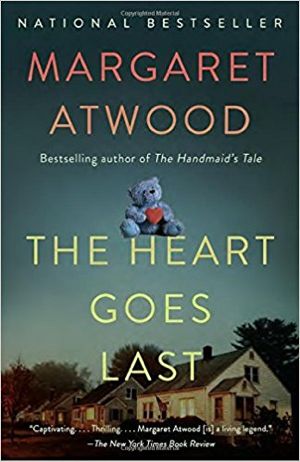 5. The Heart Goes Last, by Margaret Atwood
5. The Heart Goes Last, by Margaret Atwood
Margaret Atwood has been one of my favorite writers for decades, now, and like many, my introduction to her was The Handmaid’s Tale. I’ve read many of hers since then, and my favorite is The Blind Assassin. My family knows I’m a big fan (read about when I met her in person here), so when she puts out a new book, it’s an easy present for me.
I got The Heart Goes Last for Christmas last year and was delighted as I hadn’t heard about it. I read a few pages and was even more delighted. This story moves fast, and it’s extremely entertaining, one of Atwood’s best in my opinion. And the ending is so delicious!
Synopsis: Stan and Charmaine are a married couple trying to stay afloat in the midst of an economic and social collapse. Job loss has forced them to live in their car, leaving them vulnerable to roving gangs. They desperately need to turn their situation around—and fast. The Positron Project in the town of Consilience seems to be the answer to their prayers. No one is unemployed and everyone gets a comfortable, clean house to live in . . . for six months out of the year. On alternating months, residents of Consilience must leave their homes and function as inmates in the Positron prison system. Once their month of service in the prison is completed, they can return to their “civilian” homes.
At first, this doesn’t seem like too much of a sacrifice to make in order to have a roof over one’s head and food to eat. But when Charmaine becomes romantically involved with the man who lives in their house during the months when she and Stan are in the prison, a series of troubling events unfolds, putting Stan’s life in danger. With each passing day, Positron looks less like a prayer answered and more like a chilling prophecy fulfilled.
Indie Spotlight
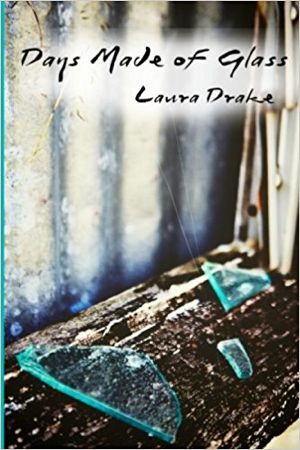 Days Made of Glass, by Laura Drake
Days Made of Glass, by Laura Drake
I’ve read several books by indie authors this year, but Days of Glass was by far the best for one reason—it grabbed me at the start and made me care about the main character. The pacing was quick, and the book quickly rose to the top of my reading list. I had to see what happened! Bravo to Laura. (To read more about Laura and her work, check out her posts on Writing and Wellness.)
Synopsis: Harlie Cooper raised her sister, Angel, even before their mother died. When their guardian is killed in a fire, rather than be separated by Social Services, they run. Life in off the grid in L.A. isn’t easy, but worse, there’s something wrong with Angel.
Harlie walks in to find their apartment scattered with shattered glass and Angel, a bloody rag doll in a corner. The doctor orders institutionalization in a state facility. Harlie’s not leaving her sister in that human warehouse. But something better takes money. Lots of it.
When a rep from the Pro Bull Riding Circuit suggests she train as a bullfighter, rescuing downed cowboys from their rampaging charges, she can’t let the fact that she’d be the first woman to attempt this stop her. Angel is depending on her.
It’s not just the danger and taking on a man’s career that challenges Harlie. She must learn to trust–her partner as well as herself, and learn to let go of what’s not hers to save.
Top 4 Non-Fiction
In no particular order…
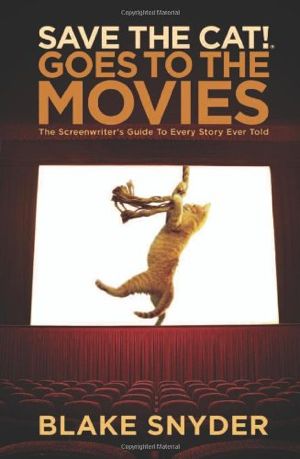 1. Save the Cat Goes to the Movies, by Blake Snyder
1. Save the Cat Goes to the Movies, by Blake Snyder
I’m late to the party on this one, too. The Save the Cat books have been all the rage in the writing/screenwriting worlds for years now. I’d seen the first one a few times at writer’s conferences, but it didn’t speak to me at those times, so I left it on the shelf. I tend to wait until the need arises in my own work to reach for a craft book, and then it has to hit me just right as perhaps holding the key to unlock the solution I’m looking for at the time.
All the cards aligned this year for me to grab Save the Cat Goes to the Movies and within the first 20 pages I’d found what I needed to get going on my story again. Snyder presents 10 basic movie plots in such a unique way that you can’t help but feel the creative gears turning. Yes, it’s a screenwriting book, but if you’re struggling with plot—or trying to figure out exactly where your story fits—this is the book for you.
Synopsis: In the long-awaited sequel to his surprise bestseller, Save the Cat!, author and screenwriter Blake Snyder returns to form in a fast-paced follow-up that proves why his is the most talked-about approach to screenwriting in years. In the perfect companion piece to his first book, Snyder delivers even more insider’s information gleaned from a 20-year track record as “one of Hollywood’s most successful spec screenwriters,” giving you the clues to write your movie.
Designed for screenwriters, novelists, and movie fans, this book gives readers the key breakdowns of the 50 most instructional movies from the past 30 years. From M*A*S*H to Crash, from Alien to Saw, from 10 to Eternal Sunshine of the Spotless Mind, Snyder reveals how screenwriters who came before you tackled the same challenges you are facing with the film you want to write—or the one you are currently working on.
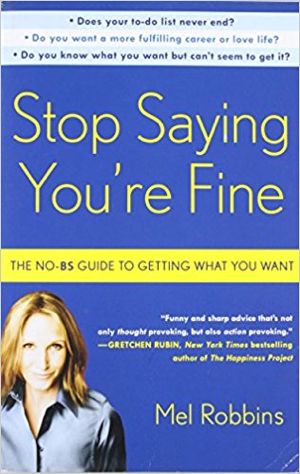 2. Stop Saying You’re Fine, by Mel Robbins
2. Stop Saying You’re Fine, by Mel Robbins
I love self-help books that help me see things in new ways, and Stop Saying You’re Fine did just that again and again. The book is all about getting past your own self-limiting thoughts and behaviors so you can better succeed at going after what you want. She helps you see how your brain sabotages your dreams, and teaches you how to outsmart your own tendency to stay firmly where you are. I would read a few pages and feel inspired to tackle something new. The second half of the book slowed down a bit for me, but the first half was well worth it.
Synopsis: Mel Robbins has spent her career teaching people how to push past their self-imposed limits to get what they truly desire. She has an in-depth understanding of the psychological and social factors that repeatedly hold you back, and more important, a unique set of tools for getting you where you want to be. In Stop Saying You’re Fine, she draws on neuroscientific research, interviews with countless everyday people, and ideas she’s tested in her own life to show what works and what doesn’t.
The key, she explains, is understanding how your own brain works against you. Because evolution has biased your mental gears against taking action, what you need are techniques to outsmart yourself.
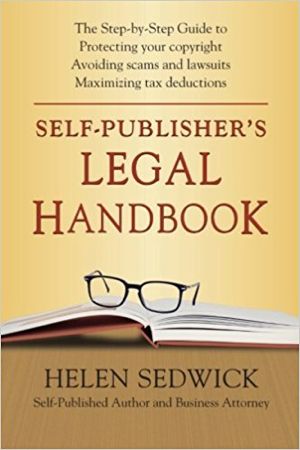 3. Self Publisher’s Legal Handbook, by Helen Sedwick
3. Self Publisher’s Legal Handbook, by Helen Sedwick
As I ventured into the world of self-publishing this year, I had some legal questions, so I went Googling. I landed on some information about the Self Publisher’s Legal Handbook and quickly grabbed the Kindle copy. If you’re new to self-publishing, this is great guide to make sure you’re dotting all your i’s and crossing your t’s, and it’s put together in such a way that it’s easy to understand and follow.
Synopsis: Self-Publisher’s Legal Handbook is the first step-by-step guide to the legal issues of self-publishing. Attorney and self-published author Helen Sedwick uses 30 years of legal experience to show writers how to stay out of court and at their desks. Topics include:
- Business set-up. From DBAs to sales taxes to crowd-funding, Self-Publisher’s Legal Handbook walks writers through the process of setting up their self-publishing ventures.
- Moving from Manuscript to Book. Self-Publisher’s Legal Handbook compares the options of engaging a self-publishing service company to doing it yourself using a print-on-demand provider. It lists which contract provisions are acceptable and which are not. It explains the mechanics of hiring designers, editors, and other freelancers.
- Intellectual Property Issues. Copyrights, trademark, fair use, and public domain are explained in practical, useful terms, including how to find copyright holders and ask permission. Self-Publisher’s Legal Handbook provide tips on licensing images and music for little or no money.
- Internet Regulations. Any writer with a blog needs to know about privacy policies, SPAM, COPPA, and DMCA. Self-Publisher’s Legal Handbook explains these regulations in easy-to-understand language.
- Spotting Scams. Writers are e-blasted by businesses promoting overpriced services, if not outright frauds. Self-Publisher’s Legal Handbook shows writers how to spot aggressive sales techniques and scams.
- The Scary Stuff. Self-Publisher’s Legal Handbook provides guidance on avoiding the dangers of defamation, invasion of privacy, and infringement.
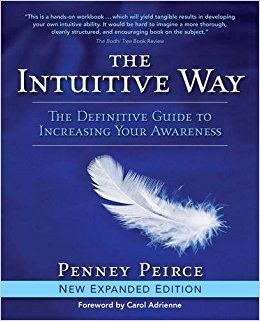 4. The Intuitive Way, by Penney Pierce
4. The Intuitive Way, by Penney Pierce
I’m a strong believer in the notion that writers need to learn how to tune into their intuition more and more as they go, particularly in today’s world where we’re regularly having to rethink our careers and where they’re going. We don’t have a designated path to follow—the path of any artist is self-directed, and the closest thing we have to a guide is the intuition.
In the noise of today’s world, though, it’s easy to lose track of the muse, or to feel like you can’t hear her voice anymore. Toward the latter part of this year, I felt like I had accomplished what I set out to do in 2017, and needed some guidance on what was to come next. When I tried to figure it out, I heard crickets, so I started looking for answers.
I found The Intuitive Way in a used bookstore on the coast, and within a few days I was on fire with ideas for my writing work in 2018. To date, I’m still only about halfway through because I’m finding it so helpful. I like to read a bit, do the exercises, and then let it sit until the popcorn stops popping, so to speak. There are several exercises throughout the book that will get your ideas flowing. If you need something to jog your creativity loose, this may be what you need.
Synopsis: Intuition is not a rare gift that only a gifted few possess but an innate human capacity that can be enhanced and developed. Synthesizing insights from psychology, East- West philosophy, religion, metaphysics, and business, this hands-on workbook in the tradition of Julia Cameron’s The Artist’s Way, can teach anyone to achieve a heightened state of perceptual vitality and integrate it into daily life.
Intuition, writes Penney Peirce, is “not the opposite of logic,” but rather “a comprehensive way of knowing life that includes both left-brain analytical thinking and right-brain communication states.” On a practical level, intuition enables us to learn faster and make quicker, more inspired decisions. On a deeper level, it “is a powerful tool that can heal the painful split we all feel between our earthly, mundane selves and our divine, eternal selves.”
What are some of your top-rated books read in 2017?

